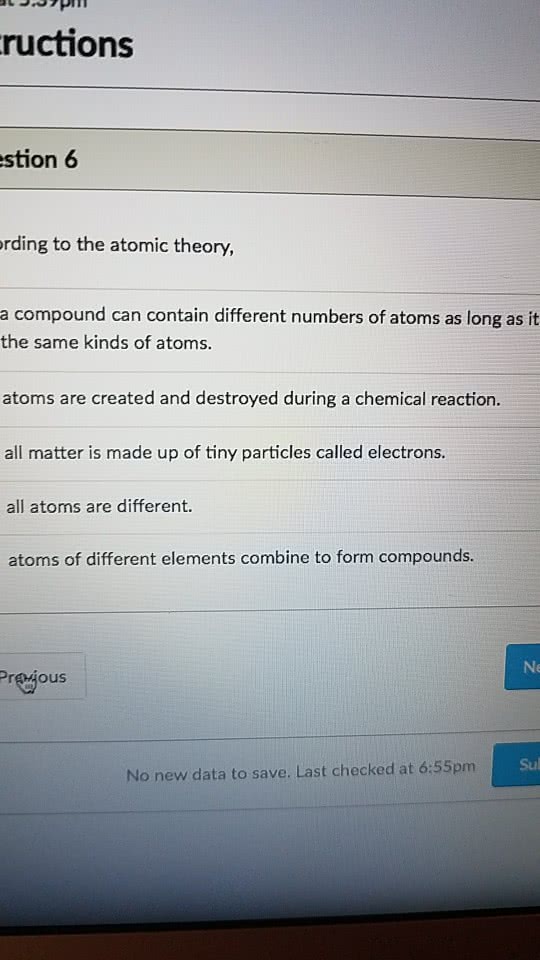CHE 101 Lecture 3: Chemistry Lecture Notes 3

Dalto’s Atoic Theory
In 1808, John Dalton reintroduced the idea of atoms and supported his atomic theory on a
fir eperietal foudatio. Dalto’s atoi theor a e stated as follows:
-Elements are made up of extremely small particles called atoms
-The atoms making up a particular element are all identical and different types of atoms
have different properties
-Each chemical compound is unique and consists of a particular combination of specific
types of atoms put together in a distinctive way
-Chemical reactions involve the reshuffling of the atoms in a compound to make new
compounds. The new compounds are made from the same atoms which were present in the
original compound.
These hypotheses explained three fundamental laws which had been recognized, if not
explicitly stated, for some time.
The Law of Definite Proportions
Every pure sample of a particular compound always contains the same proportion by mass
of the elements in the compound.
The Law of Multiple Proportions
When different masses of one element combine with a specific mass of a second element,
the mass ratios of the first element are small whole number ratios.
The Law of Conservation of Mass
The mass of the reactants equals the mass of the products
In addition to the atomic theory, Dalton made a huge contribution to chemistry by showing
how to calculate the atomic masses of the atoms involved in a reaction and how to find the
number of each type of atom in the molecules. This allowed accurate analyses of
compounds and the prediction of the amounts of each reactant needed to make a given
product.
find more resources at oneclass.com
find more resources at oneclass.com
Document Summary
In 1808, john dalton reintroduced the idea of atoms and supported his atomic theory on a fir(cid:373) e(cid:454)peri(cid:373)e(cid:374)tal fou(cid:374)datio(cid:374). Dalto(cid:374)"s ato(cid:373)i(cid:272) theor(cid:455) (cid:272)a(cid:374) (cid:271)e stated as follows: Elements are made up of extremely small particles called atoms. The atoms making up a particular element are all identical and different types of atoms have different properties. Each chemical compound is unique and consists of a particular combination of specific types of atoms put together in a distinctive way. Chemical reactions involve the reshuffling of the atoms in a compound to make new compounds. The new compounds are made from the same atoms which were present in the original compound. These hypotheses explained three fundamental laws which had been recognized, if not explicitly stated, for some time. Every pure sample of a particular compound always contains the same proportion by mass of the elements in the compound.




